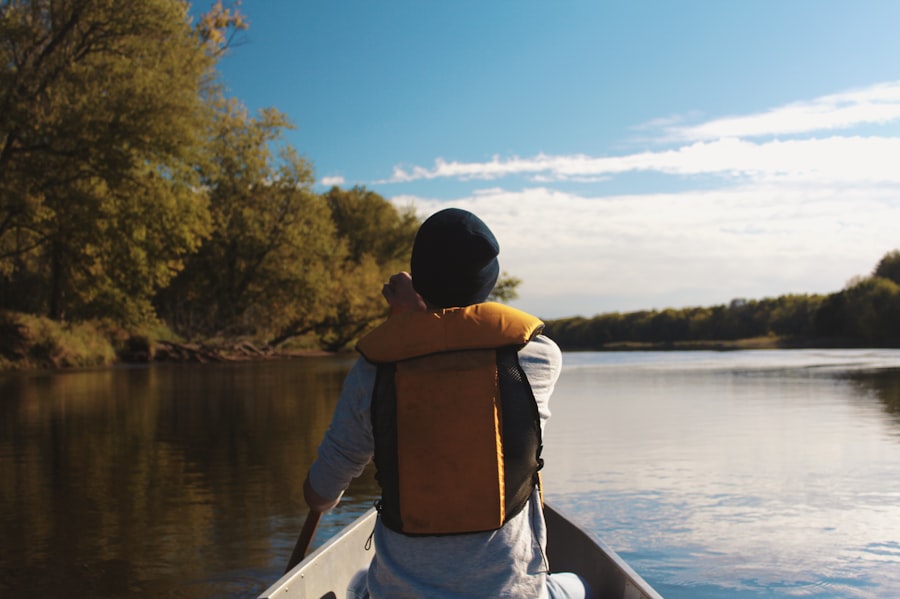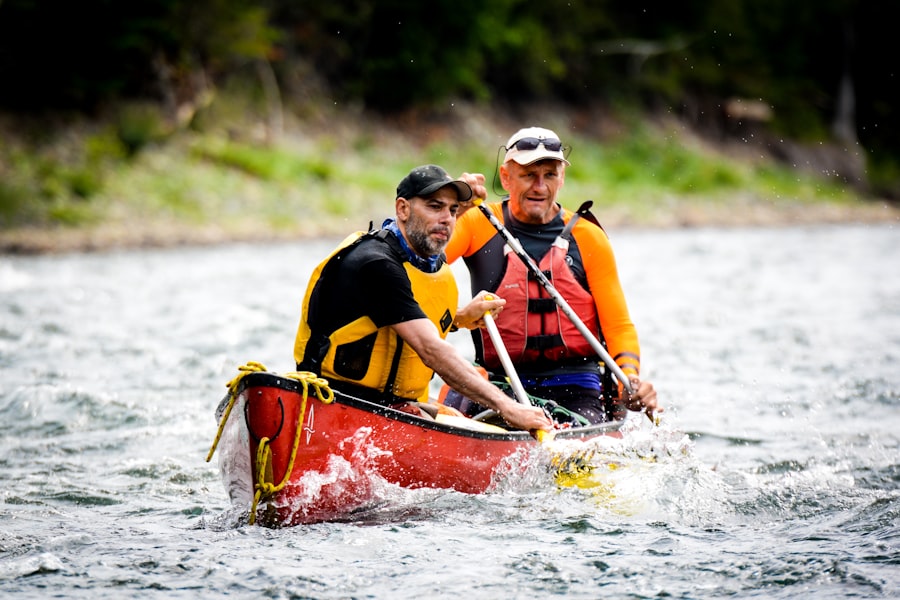Cenotes are natural sinkholes filled with fresh water, primarily found in the Yucatán Peninsula of Mexico. Formed over thousands of years through the dissolution of limestone, these geological wonders offer a glimpse into the Earth’s history and provide a unique ecosystem that supports diverse flora and fauna. You may find yourself captivated by their crystal-clear waters, often surrounded by lush vegetation and dramatic rock formations.
Each cenote has its own character, ranging from open-air pools to deep caverns, making them not only a natural marvel but also a popular destination for adventure seekers and nature lovers alike. What sets cenotes apart is their cultural significance as well. The ancient Maya civilization revered these natural wells, viewing them as sacred sites.
They believed cenotes were gateways to the underworld, and many were used for rituals and sacrifices. As you explore these enchanting locations, you can’t help but feel a connection to the past, as well as an appreciation for the natural beauty that surrounds you. Whether you’re swimming, snorkeling, or simply taking in the scenery, cenotes offer a unique blend of adventure, history, and tranquility.
Key Takeaways
- Cenotes are natural sinkholes formed by the collapse of limestone bedrock, creating unique ecosystems and geological formations.
- When choosing a cenote for exploration, consider factors such as water clarity, depth, and accessibility to ensure a safe and enjoyable experience.
- Essential safety equipment for cenote exploration includes a snorkel or diving mask, life jacket, and appropriate footwear for walking on uneven terrain.
- Practice responsible swimming and diving in cenotes by respecting wildlife, avoiding touching delicate formations, and never diving alone or without proper training.
- To interact safely with cenote ecosystems, avoid disturbing wildlife, refrain from littering, and use biodegradable sunscreen to minimize environmental impact.
Choosing the Right Cenote: Factors to Consider for Safety
When planning your visit to a cenote, it’s essential to choose one that aligns with your comfort level and experience. Not all cenotes are created equal; some are more suited for swimming and relaxation, while others may present challenges for inexperienced visitors. Consider factors such as depth, accessibility, and the presence of lifeguards or guides.
Researching these aspects beforehand can help ensure a safe and enjoyable experience. Another important factor to consider is the time of year you plan to visit. During the rainy season, some cenotes may become murky or have strong currents, making swimming less safe.
Conversely, visiting during the dry season often means clearer waters and more stable conditions. Additionally, think about the crowd levels; some cenotes can become quite busy during peak tourist seasons. If you prefer a more serene experience, consider visiting during off-peak times or exploring lesser-known cenotes that may offer a more intimate connection with nature.
Safety Equipment: What You Need to Bring for a Safe Cenote Exploration

Before heading out to explore a cenote, it’s crucial to equip yourself with the right safety gear. A well-fitted life jacket is essential, especially if you’re not a confident swimmer or if you’re visiting a deeper cenote. Many cenotes offer rental options, but bringing your own ensures you have a comfortable fit.
Additionally, consider wearing water shoes or sandals with good grip to protect your feet from sharp rocks and slippery surfaces. Don’t forget to pack other essentials such as sunscreen, insect repellent, and a first-aid kit. The sun can be intense, especially when reflecting off the water, so applying waterproof sunscreen will help protect your skin.
Insect repellent is also important, as some cenotes are located in areas where mosquitoes thrive. A small first-aid kit can be invaluable in case of minor injuries or scrapes while exploring rocky terrain. By preparing adequately with the right equipment, you can focus on enjoying your cenote adventure without unnecessary worries.
Swimming and Diving: Tips for Safe and Responsible Cenote Activities
| Activity | Tips for Safe and Responsible Cenote Activities |
|---|---|
| Swimming | Always swim with a buddy, be aware of your surroundings, and avoid diving in shallow areas. |
| Diving | Get proper training and certification, check your equipment before diving, and always follow the rules and guidelines of the cenote. |
| Respect Wildlife | Observe wildlife from a distance, avoid touching or disturbing any animals, and never feed them. |
| Environmental Conservation | Do not litter, avoid using harmful chemicals like sunscreen, and respect the natural beauty of the cenote. |
When swimming or diving in a cenote, it’s vital to prioritize safety while also being respectful of the environment. Always swim with a buddy; this not only enhances safety but also allows you to share the experience with someone else. Before diving in, take a moment to assess the water conditions and familiarize yourself with the area.
Look out for any signs indicating depth or potential hazards like submerged rocks or strong currents. As you enjoy your time in the water, be mindful of your surroundings. Avoid touching or disturbing aquatic life and refrain from using any oils or lotions that could harm the delicate ecosystem.
If you’re diving, ensure you have proper training and equipment; consider hiring a local guide who knows the area well. This not only enhances your safety but also enriches your experience as they can share insights about the cenote’s history and ecology.
Wildlife and Plant Life: How to Interact Safely with Cenote Ecosystems
Cenotes are home to diverse wildlife and plant life that thrive in their unique ecosystems. As you explore these natural wonders, it’s essential to interact with the environment responsibly. Keep an eye out for fish, turtles, and various bird species that may inhabit the area.
Observing wildlife from a distance is key; avoid feeding animals or attempting to touch them, as this can disrupt their natural behaviors and habitats. In addition to animal life, cenotes often feature unique plant species that contribute to their beauty and ecological balance. Be cautious when walking around the edges of cenotes; avoid trampling on vegetation or picking plants.
Instead, take photographs to capture the beauty of your surroundings without causing harm. By respecting the wildlife and plant life in cenotes, you contribute to preserving these ecosystems for future generations to enjoy.
Environmental Considerations: How to Minimize Your Impact on Cenotes

As you immerse yourself in the beauty of cenotes, it’s crucial to consider your environmental impact. One of the most effective ways to minimize your footprint is by practicing Leave No Trace principles. This means packing out everything you bring in—whether it’s food wrappers, plastic bottles, or any other waste—to keep these natural spaces pristine.
Additionally, consider using biodegradable products when possible. Traditional sunscreens can contain harmful chemicals that damage aquatic ecosystems; opting for reef-safe sunscreen helps protect both your skin and the delicate balance of life within cenotes. When swimming or diving, avoid disturbing sediment on the bottom of the cenote; this can cloud the water and disrupt habitats for fish and other organisms.
By being mindful of your actions, you can enjoy cenotes while ensuring they remain beautiful and healthy for years to come.
Emergency Preparedness: What to Do in Case of an Accident or Injury
While exploring cenotes can be an exhilarating experience, it’s essential to be prepared for emergencies. Before you dive in, familiarize yourself with basic first-aid procedures and know how to contact local emergency services if needed. Having a plan in place can make all the difference in case of an accident or injury.
If someone in your group gets injured or feels unwell while at a cenote, remain calm and assess the situation. If it’s a minor injury like a scrape or cut, clean it with fresh water if available and apply a bandage from your first-aid kit. For more serious injuries or emergencies such as drowning or unconsciousness, call for help immediately and follow any instructions provided by local authorities or lifeguards present at the site.
Being prepared can help ensure that everyone has a safe experience while enjoying these stunning natural wonders.
Local Regulations and Guidelines: Following Rules for a Safe Cenote Experience
To ensure a safe and enjoyable visit to cenotes, it’s important to adhere to local regulations and guidelines set by authorities or conservation organizations. These rules are designed not only for your safety but also for the protection of these fragile ecosystems. Before entering any cenote, take time to read posted signs regarding swimming areas, depth restrictions, and any specific rules about wildlife interactions.
Many cenotes have designated areas for swimming or diving; sticking to these zones helps minimize environmental impact and ensures everyone can enjoy their time safely. Additionally, some cenotes may require permits or have entrance fees that contribute to conservation efforts—be sure to respect these requirements as they play a vital role in preserving these natural treasures. By following local regulations and guidelines, you contribute to maintaining the beauty and integrity of cenotes for future visitors while enhancing your own experience in these breathtaking locations.
